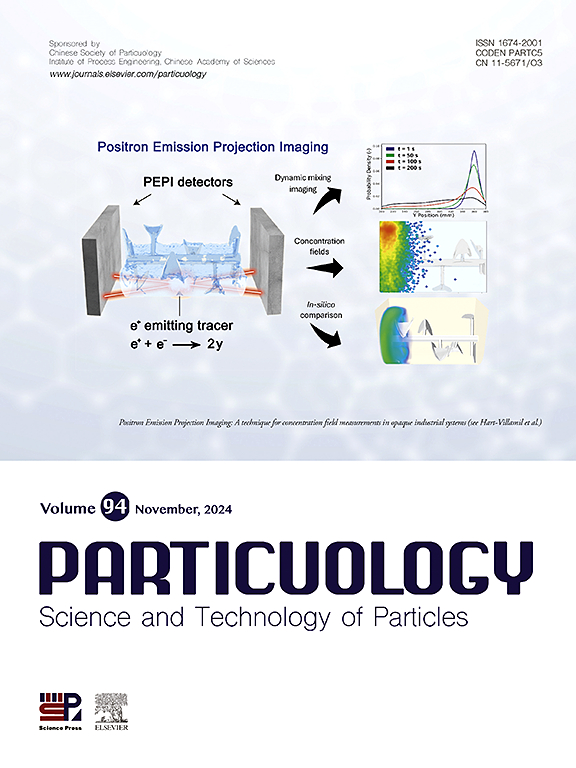月球表面的氧化还原过程:现状与进展
IF 4.3
2区 材料科学
Q2 ENGINEERING, CHEMICAL
引用次数: 0
摘要
月球风化层记录了与太阳系内外物质-能量相互作用的特征。基于实验室分析和遥感数据的传统空间风化过程强调还原主导范式,其中纳米相金属铁(np-Fe0)的形成和光谱变红主要是由微陨石撞击和太阳风辐射驱动的。然而,新出现的复杂氧化过程的证据,包括撞击产生的磁铁矿、歧化反应和可能由地球磁尾引起的氧化特征,挑战了这一传统观点。这些相互矛盾的进化特征表明,现有的模型可能无法捕捉到月球空间风化过程中氧化和还原过程的全部过程。结合实验室分析和遥感数据,我们构建了一个多尺度氧化还原动力学框架,阐明了三个关键反应过程:气相沉积、原位还原和自氧化还原反应。该框架揭示了全球持续还原和局部偶发性氧化事件之间的时空解耦。这一综述为理解复杂的月球表面演化机制和无空气行星体的长期演化提供了关键约束。本文章由计算机程序翻译,如有差异,请以英文原文为准。

Redox processes on the lunar surface: Current status and progress
The lunar regolith records signatures of material‒energy interactions with both the solar system and beyond. Traditional space weathering processes, based on laboratory analyses and remote-sensing data, emphasize a reduction-dominated paradigm in which nanophase metallic iron (np-Fe0) formation and spectral reddening are primarily driven by micrometeorite impacts and solar wind irradiation. However, emerging evidence of complex oxidation processes, including impact-generated magnetite, disproportionation reactions, and oxidation signatures potentially induced by Earth's magnetotail, challenges this conventional view. These conflicting evolutionary signatures indicate that existing models may fail to capture the full spectrum of oxidation and reduction pathways involved in lunar space weathering. Integrating laboratory analyses and remote-sensing data, we here construct a multi-scale redox dynamics framework that elucidates three critical reaction processes: vapor deposition, in situ reduction, and self-redox reactions. This framework reveals a spatiotemporal decoupling between globally sustained reduction and localized, episodic oxidation events. This review provides key constraints for understanding the complex lunar surface evolution mechanisms and long-term evolution of airless planetary bodies.
求助全文
通过发布文献求助,成功后即可免费获取论文全文。
去求助
来源期刊

Particuology
工程技术-材料科学:综合
CiteScore
6.70
自引率
2.90%
发文量
1730
审稿时长
32 days
期刊介绍:
The word ‘particuology’ was coined to parallel the discipline for the science and technology of particles.
Particuology is an interdisciplinary journal that publishes frontier research articles and critical reviews on the discovery, formulation and engineering of particulate materials, processes and systems. It especially welcomes contributions utilising advanced theoretical, modelling and measurement methods to enable the discovery and creation of new particulate materials, and the manufacturing of functional particulate-based products, such as sensors.
Papers are handled by Thematic Editors who oversee contributions from specific subject fields. These fields are classified into: Particle Synthesis and Modification; Particle Characterization and Measurement; Granular Systems and Bulk Solids Technology; Fluidization and Particle-Fluid Systems; Aerosols; and Applications of Particle Technology.
Key topics concerning the creation and processing of particulates include:
-Modelling and simulation of particle formation, collective behaviour of particles and systems for particle production over a broad spectrum of length scales
-Mining of experimental data for particle synthesis and surface properties to facilitate the creation of new materials and processes
-Particle design and preparation including controlled response and sensing functionalities in formation, delivery systems and biological systems, etc.
-Experimental and computational methods for visualization and analysis of particulate system.
These topics are broadly relevant to the production of materials, pharmaceuticals and food, and to the conversion of energy resources to fuels and protection of the environment.
 求助内容:
求助内容: 应助结果提醒方式:
应助结果提醒方式:


